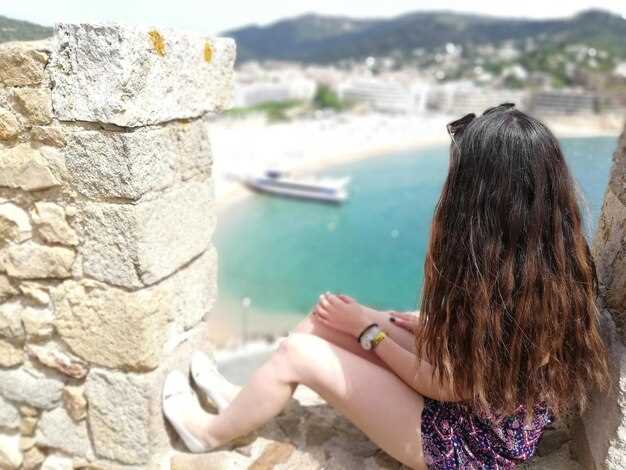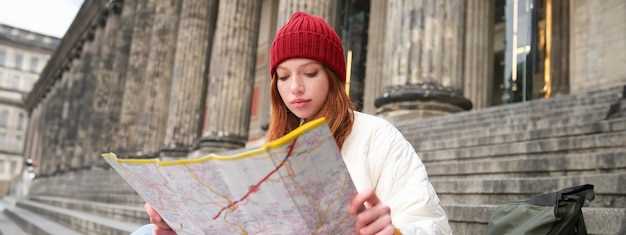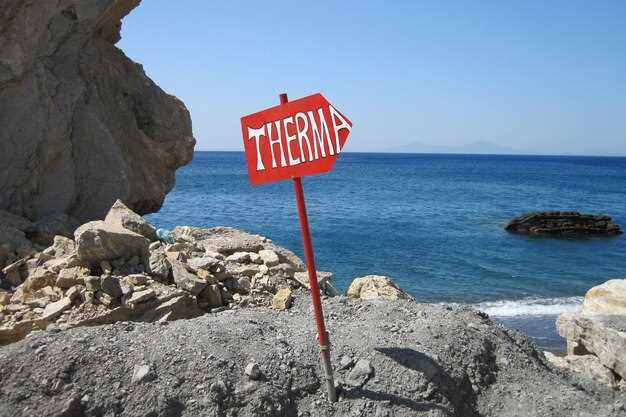
Start with a rental car for a full-day coastal loop from Valletta to Mellieha and back, and plan in advance to keep the day simple.
From Mellieha’s sandy beaches, head along the marine cliffs to Golden Bay, then take a short ferry to the Blue Lagoon. This quite popular route is best booked in advance; youll find several operators offering rental boats, with experienced captains who can show you hidden coves and a sea cave hole along the coast.
Base yourself in Rabat or Mdina for a morning stroll; the old streets lead to a favourite point on the walls for sunset views. The Antonine arches add texture to the walk and connect Malta’s layers of history to your day.
There are several ways to tailor your Malta day; skip overcrowded museums unless you have a specific interest. Instead, focus on coastal walks, harbour views, and a long ferry hop between islands. A base could be Valletta or Sliema, then use transport options to save time for the sunset by the water.
For planning and logistics, book a few highlights in advance and keep a backup plan in case of weather changes. youll appreciate the clarity of a well-structured plan when you can linger at a favourite harbour cafe or revisit a sandy stretch of coast before dinner.
Malta: Gastronomic and Cultural Experiences
Start with a Marsaxlokk dinner after a long, scenic walking along the seafront, where colorfully painted boats bob and the catch is served with lemon, olive oil, and a dollop of cream. Choose a place with a license to operate and secure a seat right along the water for a full, unhurried meal.
Vittoriosa, perched on a rocky land promontory, is a town where centuries-old fortifications meet shaded squares. Located along the Grand Harbour, the place offers an impressive blend of medieval lanes and waterfront views. Monuments line the routes as you explore, giving a detailed sense of Malta’s layered history.
Travelers with kids appreciate a detailed, family-friendly loop: the harbor promenade, the fortifications, and a quick pastry stop. You can hire a licensed guide to share stories of the Knights and the harbor, keeping the pace quite comfortable for little feet.
From Vittoriosa, take a short drive along the coast to Marsaxlokk, where the Sunday market is full of color and local flavor. Along the quay you’ll find grilled fish stalls, salty snacks, and a scoop of gelato with cream. It’s a vibrant place to linger beyond the tourist crowds, a true taste of Maltese life for a traveler seeking authentic experiences.
Must-try Maltese dishes and where to taste them in Valletta, Sliema, and beyond

Start with fenkata, a rich rabbit stew in a family-run Valletta tavern off Strait Street, where the aroma of garlic and rosemary fills a small room and you can live upon the slow rhythm of the island. Order aljotta next, a bright fish soup, and pair it with a crusty ftira for a balanced first taste of Maltese flavors.
Stroll along the harbor to see boats bobbing in the light and then head to Sliema for pastizzi and light bites along The Strand. The promenade offers amazing views, and you can enjoy sunlight as it reflects off the lagoon after a short ferry ride or walk. For a kid-friendly break, choose spots with outdoor seating by hidden coves, where the land meets the sea and nature feels close at hand.
Beyond Valletta and Sliema, villages and coastal towns boast tiny taverns and limited hours that are worth planning around. Senglea’s quays and the old city walls bring a sense of history, and the Citadel in nearby Gozo offers a dramatic backdrop for a meal. In Marsaxlokk, the Sunday fish market is a must, where lampuki pie and tal-mixta platters are common and fresh from the morning’s catch. In Birgu and Vittoriosa, you’ll find hidden, family-run places serving tal-mixta on warm ftira with olive oil–perfect for a spring lunch after a light hike along the coast. If you’re staying longer, a day trip to Mosta to see its famous dome is a great contrast to sea tastings, and you can end with a stroll through village lanes to sample a small, comforting end to the day.
These dishes and spots show Maltese hospitality at its best: simple ingredients, clear flavors, and meals that feel like a part of the island’s daily life. From Valletta’s historic lanes to Senglea’s quays, you’ll find a mix of flavors and settings that balance refined bite moments with casual, family-friendly meals–perfect for a relaxed itinerary where you can keep exploring and tasting without rushing.
| Dish | Valletta | Sliema | Beyond |
|---|---|---|---|
| Pastizzi (cheese or pea) | Long-standing pastizzeria along Strait Street; flaky, savory, cheap | Bakery lines near The Strand; quick, fresh bites after a stroll | Village bakeries around Marsaxlokk for a seaside twist |
| Fenek ta’ laqtuq / Fenkata (rabbit stew) | Family tavern near Strait Street; slow braise, rosemary notes | Seasonal specials at harbor-side bistros on Tower Road | Senglea waterfront tavern or Birgu lanes with a homey touch |
| Aljotta (Maltese fish soup) | Harbor-front cafe with fresh catch and bright flavors | Sea-view café along The Strand or promenade edges | Marsaxlokk fish stalls and quay-side eateries |
| Lampuki Pie | Seafood-focused tavern near the inner harbour | Coastal restaurant along the promenade | Birgu or Vittoriosa waterfronts; Gozo variants near Marsalforn |
| Ftira tal-Mixta (mixed ftira platter) | Hidden backstreet taverna serving tal-mixta on warm ftira | Craft bakery with olive oil, tomato, and local toppings | Village spots in Mosta or Gozo’s coast for a full spread |
| Tal-mixta (mixed Maltese platter) | Part of a shared ftira plate in a quiet Valletta lane | Light, social version at seaside taverns on the Sliema front | Hidden gems in Senglea or Birgu; a true taste of local land and sea |
Authentic markets, bakeries, and tavernas for budget-friendly flavors
Visiting Marsaxlokk on Sunday morning gives you a budget-friendly start: a buzzing market, affordable seafood, tiny coves above the harbor walls, and the chance to sample a cannoli from a tiny bakery. It’s one of Malta’s simplest destinations for food lovers, and you’ll see locals and travelers comparing prices and flavors.
Back in Valletta and the Three Cities, small bakeries turn out cheap, satisfying bites: hot ftira, flaky pastizzi stuffed with ricotta, and cannoli with chocolate. Look for places with a line out the door–that’s your sure sign of fresh bakes, often sold at hole-in-the-wall counters that keep costs down.
Tavernas around the Three Cities and along the Valletta waterfront offer hearty Maltese staples at modest prices: rabbit stew, bragioli with herb sauce, and baked fish with garlic and lemon. Pair these with local bread and a bottle of water, then wander the walls of the city streets to stretch the budget while stayingcationing in genuine taste.
For a lighter, budget-friendly day, wander smaller towns like Rabat and Mdina, where markets spill onto streets and you can assemble a simple picnic of Maltese bread, olive oil, cheese, and olives from a garden shop. It’s a relaxed way to savor regional flavors without overspending, and you can tailor the stops to suit your pace and tastes.
From travel plans, you’ll still have time for a little exploration: neolithic temples such as Mnajdra or Ħaġar Qim nearby, then, if energy allows, a quick Gozo run to the Dwejra area for the grotto and the coastline’s tiny coves. This mix keeps the day compact and rewarding, and you’ll leave with a sense of being able to enjoy Malta like a local, not just a visitor.
Common tourist traps to skip at peak times and smarter alternatives
Skip crowded harbor tours. You might think it saves time, but book a guide with a license for a dawn walk to the citadel and its walls, so you see details locals miss and avoid the heat of the day.
Explore hidden neighborhoods like cospicua and barrakka during off-peak hours. In tiny lanes, the charm can show in each detail: hand-painted doors, a sunlit balcony, and a cove where you can watch boats.
Plan a meal that highlights biz-zejt, maltese fish, and other home-cooked flavors instead of restaurant traps near hotel strips. Ask locals whats worth trying and where to find a good fish dish with maltese flavors.
Beaches and swimming are best planned for early light. Choose a tiny cove near Marsaxlokk or a hidden beach along the coast rather than the busy main beaches. Some bays are free to access, and you can combine a swim with a quick fish watch or a sunset walk through the streets of Valletta. Afterward, leave your hotel for a local snack and a short visit to the barrakka gardens for good views.
Smarter alternatives start with a clear plan that mixes sights and food. Keep a base near Valletta for minimal travel, then loop through a few must-do stops: the citadel, barrakka views, cospicua’s charm, and a short ferry ride to Birgu. The most rewarding approach includes eating biz-zejt and a simple fish dish at a local spot, not a hotel restaurant, and leaving space for a few free hours at the beach or a tiny harbor. This approach keeps your energy high and your Malta experience authentic.
Festivals, religious processions, and traditional crafts you can join

Plan to join a local festa in a historic town; the procession along a rocky street under warm light is breathtaking, and the scene feels authentic. Usually held on weekend evenings, these events are worth visiting for the colours on balconies, the brass bands, and the sense of community locals share with visitors.
If you want a hands-on moment, look for open workshops during the festa week. Some towns host tal-mixta beadwork sessions and other traditional crafts in the shadow of the smallest churches. These sessions form a memory you can carry home, something you’ll treasure as gems from your trip. For an extra touch, try an extra workshop that fits between parades.
In addition to processions, you’ll find typical crafts at the Ta’ Qali Crafts Village and in the narrow lanes of Rabat and Mdina. Here you can watch glass-blowing, pottery, and lace-making, and you can join a brief class to create a small keepsake. The ideal option is a short, authentic session that suits a window between events and a street-food stroll.
For a tasty break, head to a street stall for cannoli and other light pastries; these colours and textures are common after a parade and pair well with serene lanes and sun-washed stone architecture. If you plan ahead, you can time a visit to a church square when a procession passes, catching locals cheering from balconies.
Before you go, check with community centers or parish offices about participation options. Some events welcome visitors to walk along the route, others invite you to stand in a designated area with locals, so you can experience the moment without interrupting the procession. Planning ahead ensures you’ll enjoy the full experience and leave with some gems from authentic Maltese culture.
Practical 2-day food-and-culture itinerary with time suggestions
Start with a guided sunrise walk in mdina, then sample pastizzi at a cafe nearby to kick off your malta travel. This plan keeps you in easy walking routes, allows enough time for meals, and suits kids as well as grown-ups while you observe the colours of local life.
Day 1, 8:00–9:30: mdina hilltop lanes invite a relaxed walk; the city is built on a rock outcrop, with buff-coloured limestone and warm colours that set the tone. Find a lookout for a better point to take in the views and imagine centuries of travel here.
Day 1, 9:45–12:00: Rabat and the ancient catacombs offer a compact historical feel; you cant miss the carved arches and the sense of being in a smaller, quieter part of the island. 12:00–13:00: lunch with pastizzi and ftira at a family-run cafe, where a visitor can grab a quick bite and kids stay entertained.
Day 1, 13:00–15:00: Valletta awaits with must-sees like St John’s Co-Cathedral, the Grand Harbour, and the National Museum. A guided walk here gives you a better point of reference, and you can keep wandering where antonine era hints pop in the corners of older streets.
Day 1, 15:00–17:00: stroll along the harbour, then 18:00–19:30: dinner in a fisherman’s quarter where you sample fresh fish, ftira, and local buff-coloured breads. If you want to avoid tourists, pick a venue off the main waterfront and enjoy the boats and their colours at sunset.
Day 2, 8:00–10:00: Marsaxlokk village wakes up with painted boats and a morning market. It’s a great place for watching fishermen mend nets and for tasting fresh seafood and a warm pastizzi. You cant miss the colours of local life.
Day 2, 10:30–12:00: take a short boat ride to the caves near Wied iz-Zurrieq or stay by the harbour to observe the colours of the boats and the sea. 12:00–13:00: lunch by the water with a light salad and bread, plus a second chance to try pastizzi if you want.
Day 2, 14:00–16:00: a john-led guided workshop gives you a feel for making bread and pastry, with a local baker sharing tips. 16:00–18:00: return to the city, pick up souvenirs, and end with a coffee while reflecting on the antonine-era ruins and the places that felt best for you.
Tips: keep transport time under control by staying in a central base; travel between mdina, valletta, and marsaxlokk by bus or taxi. This plan caters to visitors with kids and to solo travelers alike; you cant go wrong with slow mornings, markets, and shared plates for a better sense of maltese life. If you want, a local john can guide a longer afternoon in the city, making the experience smoother and more authentic.
